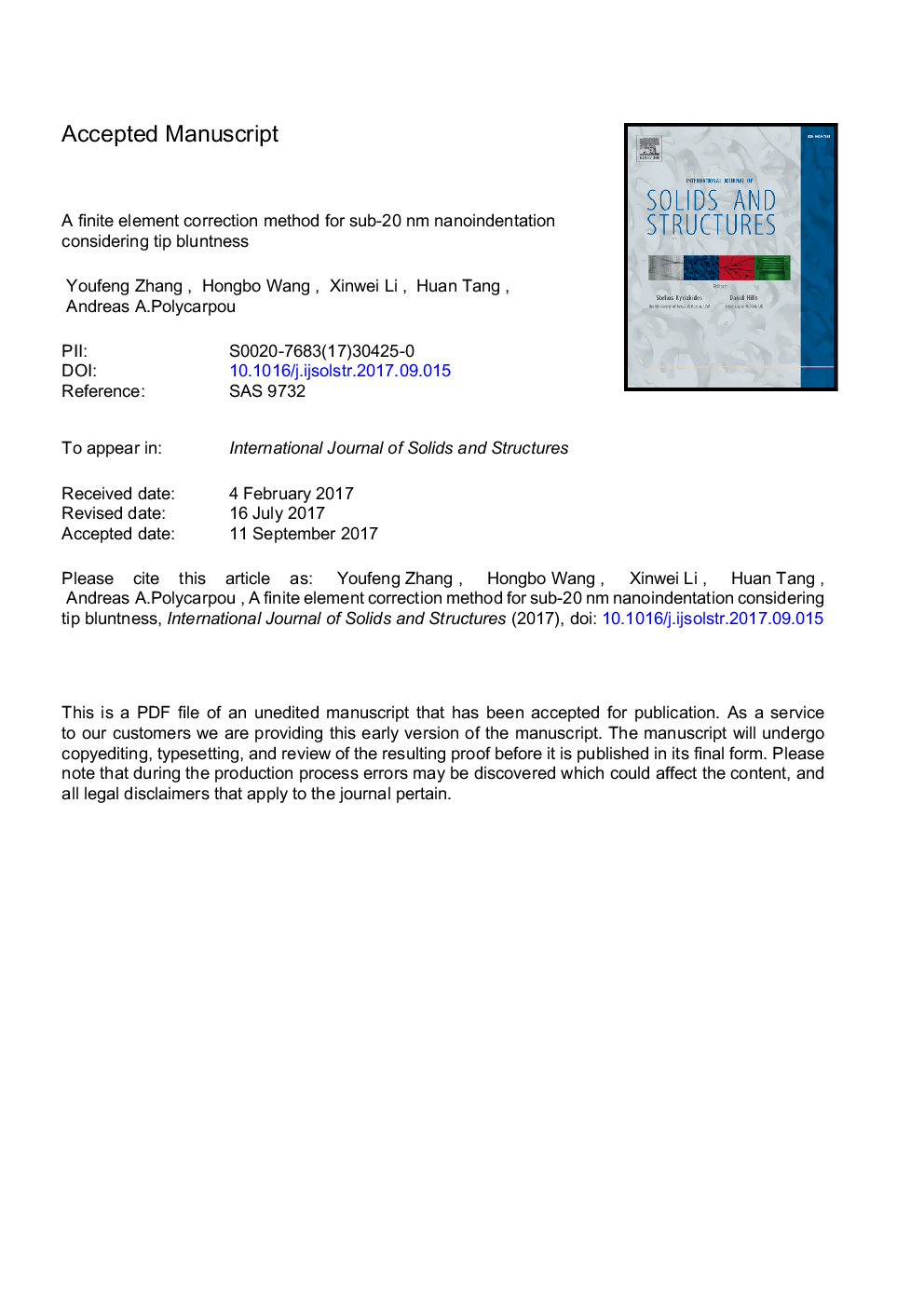| Article ID | Journal | Published Year | Pages | File Type |
|---|---|---|---|---|
| 6748501 | International Journal of Solids and Structures | 2017 | 31 Pages |
Abstract
Due to substrate effects and inherent tip bluntness, using current state-of-the-art nanoindentation instrumentation, it is difficult to directly measure mechanical properties of thin films less than 20â¯nm thick. With the aid of Finite Element Analysis (FEA), we obtain the mechanical properties by correlating simulated force-displacement responses with those from nanoindentation experiments. For shallow indentation experiments that is required for very thin films, it is found that an indenter model with a blunt tip is more realistic and leads to accurate characterization of mechanical properties. The proposed blunt tip model is validated with experiments on a standard fused quartz sample, and then applied to measure the nanomechanical properties of a 90â¯nm thick metal alloy layer and a 14â¯nm thick magnetic layer sandwiched between a carbon overcoat and a metal alloy. The magnetic layer properties are found to be 180â¯GPa for the reduced modulus and 2.9â¯GPa for the yield strength.
Related Topics
Physical Sciences and Engineering
Engineering
Civil and Structural Engineering
Authors
Zhang Youfeng, Wang Hongbo, Li Xinwei, Tang Huan, Andreas A. Polycarpou,
